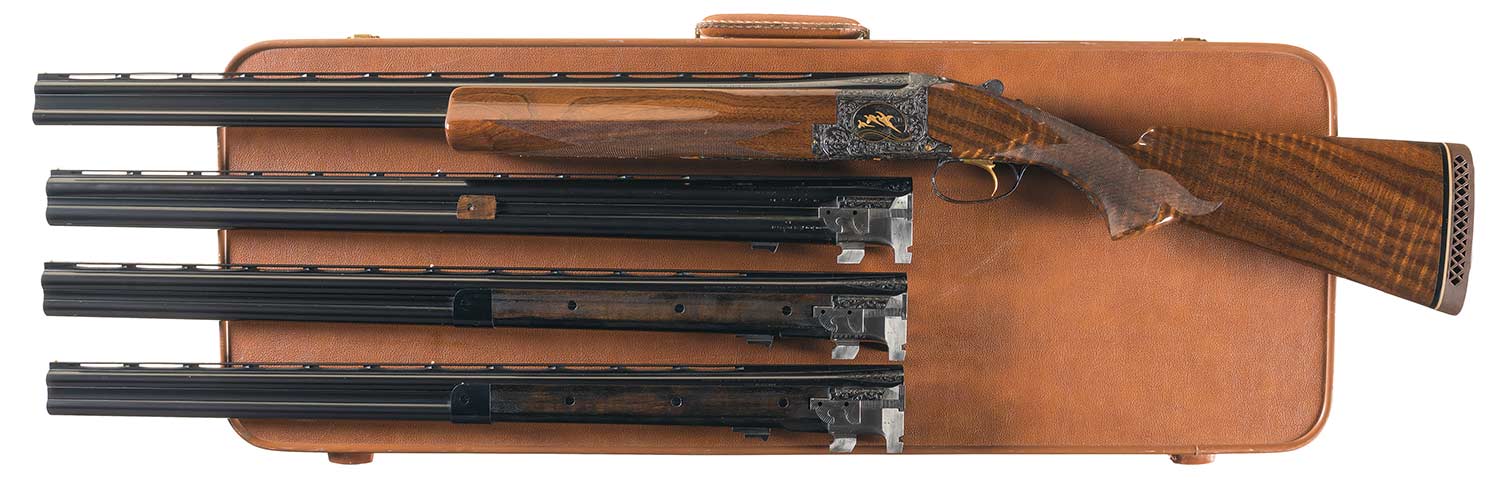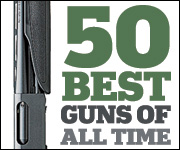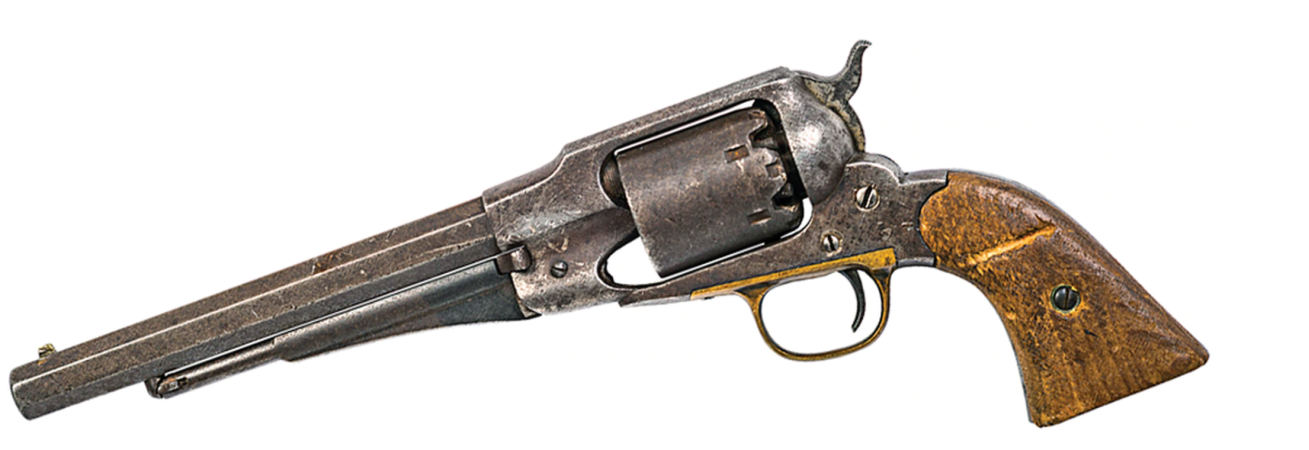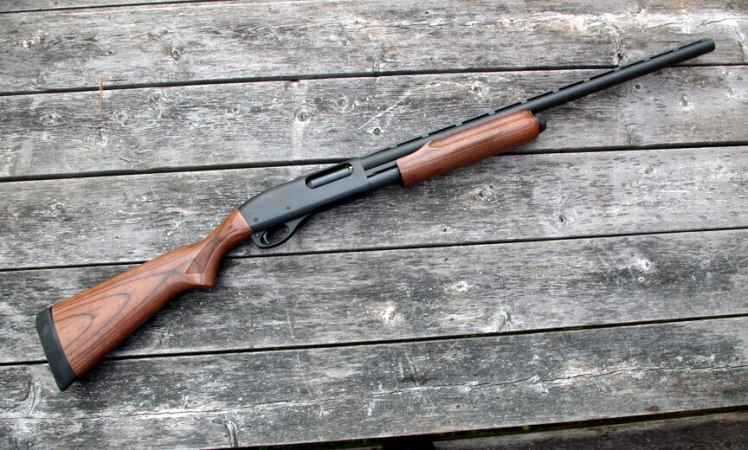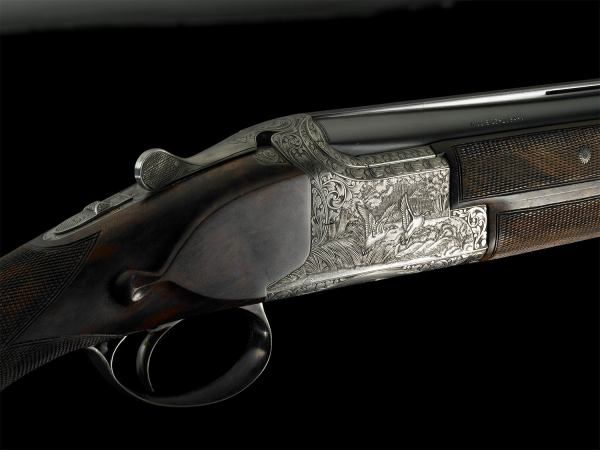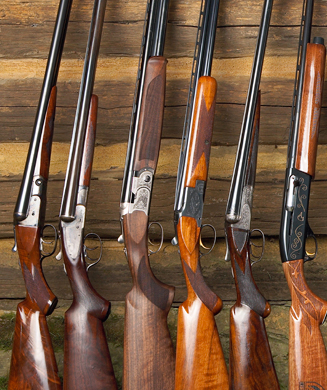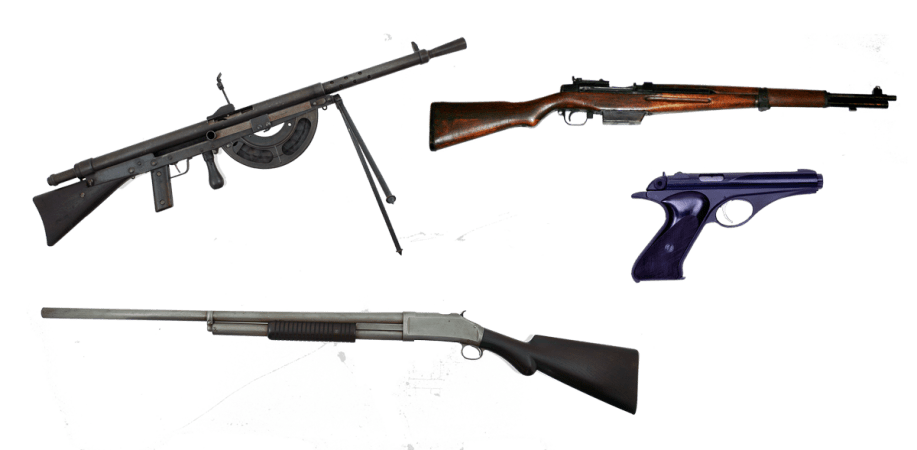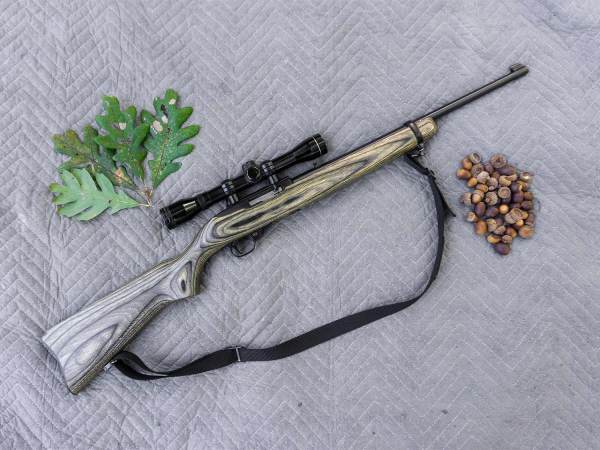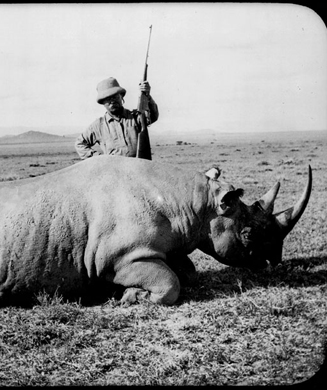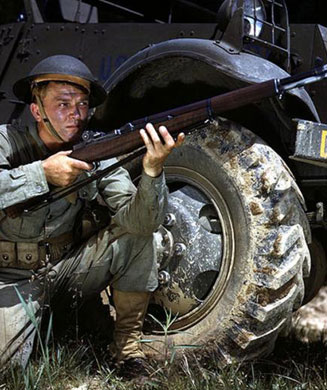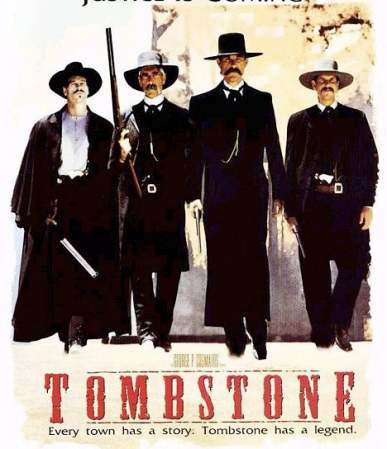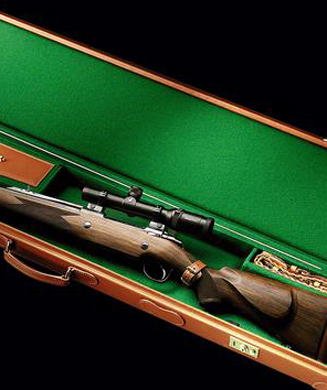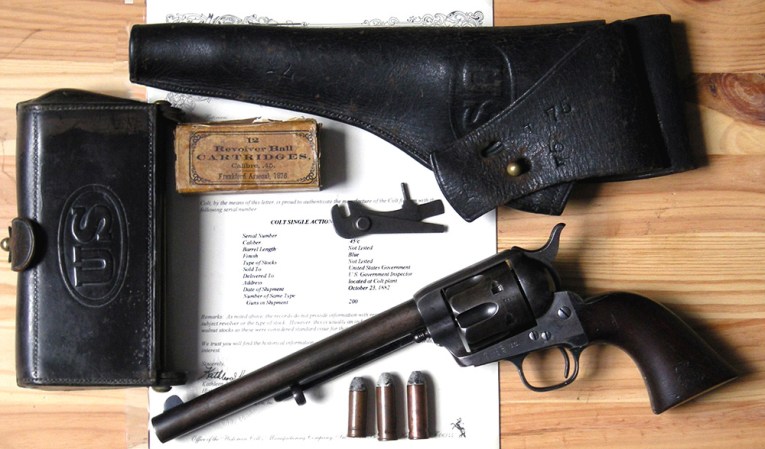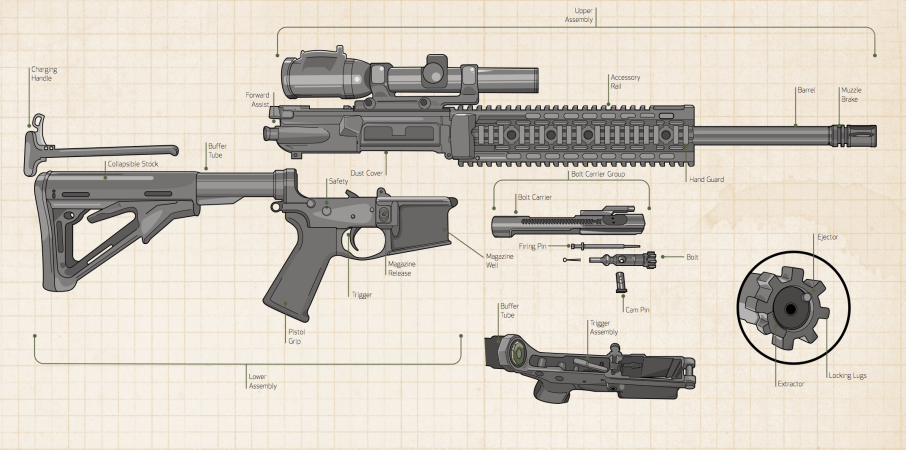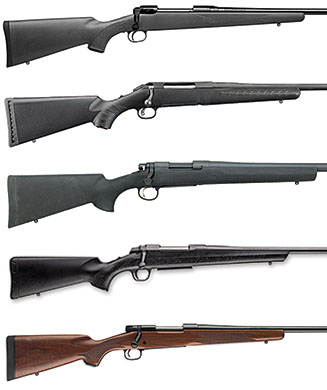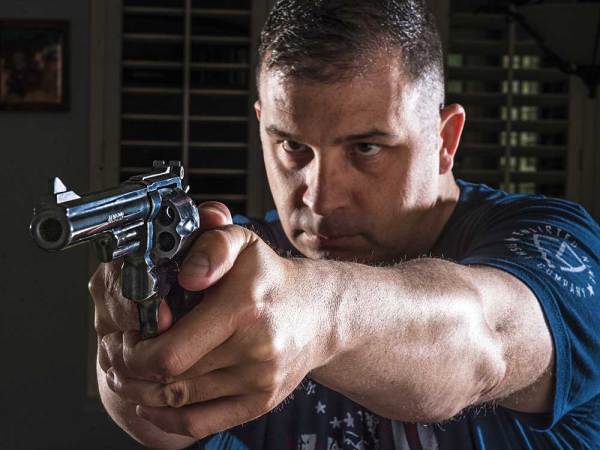We may earn revenue from the products available on this page and participate in affiliate programs. Learn More ›
If you’ve been shooting or hunting for any significant period of time, you probably have regrets over parting with a gun or two that you shouldn’t have. Equally disappointing are those times when a manufacturer stops making a favorite gun, often without warning or announcement.
Sometimes, guns go away because they simply aren’t selling in sufficient numbers to justify continued production. Consumer tastes change over time, and a visit to any major gun retailer will reveal row after row of guns with synthetic stocks but relatively few with richly figured walnut stocks. Sometimes, guns meet their demise because their construction was labor-intensive, requiring a high degree of craftsmanship and hand fitting, and they become too expensive to produce and sell at a price the masses will accept. And sometimes, a manufacturer goes out of business or is sold to owners who are more focused on the bottom line than on top-line quality, and guns are replaced by models that are cheaper to produce but infinitely uglier and devoid of character.
Of course, a great many of today’s guns are lighter, more durable, more weather resistant and far more accurate than their predecessors, but whenever an old favorite goes away, many of us find ourselves wistfully wishing for bygone days when, to hear us tell it, guns were made with wood and men were made of steel.
In compiling a list of guns we wish were still being made, I talked to quite a few fellow outdoor scribes and conducted some informal polling of highly knowledgeable shooters. There were a few surprises along the way. Some guns we thought were discontinued have been resurrected, albeit in altered form in some cases, so those didn’t make the list. Some of the guns we chose have been relegated to the dustbin of history, while others command high prices as collectors have driven their value up. You may agree or disagree with our choices — and perhaps be surprised by one or two — but since we get to do the picking, here are 10 guns we wish were still being made.
1. Savage Model 99

The most-chosen gun on our list, by a wide margin, is the Savage Model 99. As its name indicates, the 99 hit the American shooting scene in 1899, and it was a groundbreaking, internal-hammer design employing a unique rotary magazine. That was just the ticket for hunters who wanted not only the advantages of a fast-shooting, lever-action repeater, but also the ability to use more modern ammo with pointy, spitzer-type bullets for greater range and superior ballistic performance. An early advertisement for the gun called it “The rifle of the 20th century.”
Until the last rifles were made, about 100 years later, the gun was offered in many variations and a host of chamberings, including the popular, proprietary .300 Savage. Riflescopes were not in wide use when the gun was first introduced, but the fact that it was a side ejector meant it could easily accommodate scopes later on. Most were equipped with iron sights or tang-mounted peep sites until Savage began drilling and tapping the guns to accept scopes. The rifle was not always noted for delivering the type of tack-driving accuracy we expect from guns today, due partly to its two-piece stock and rear-locking bolt design, but it was plenty accurate to convert deer to table fare. In guns of certain chamberings, including those of .358 and .375 persuasion, it had the power to handle just about anything in North America.
Entire books have been devoted to chronicling the history of the 99 and the seemingly countless variations it was offered in, but a couple of changes over the years are worth noting. Earlier versions came with rotary magazines and a trigger-guard safety, while guns of more recent vintage have a detachable magazine and tang safety.
2. Colt Python
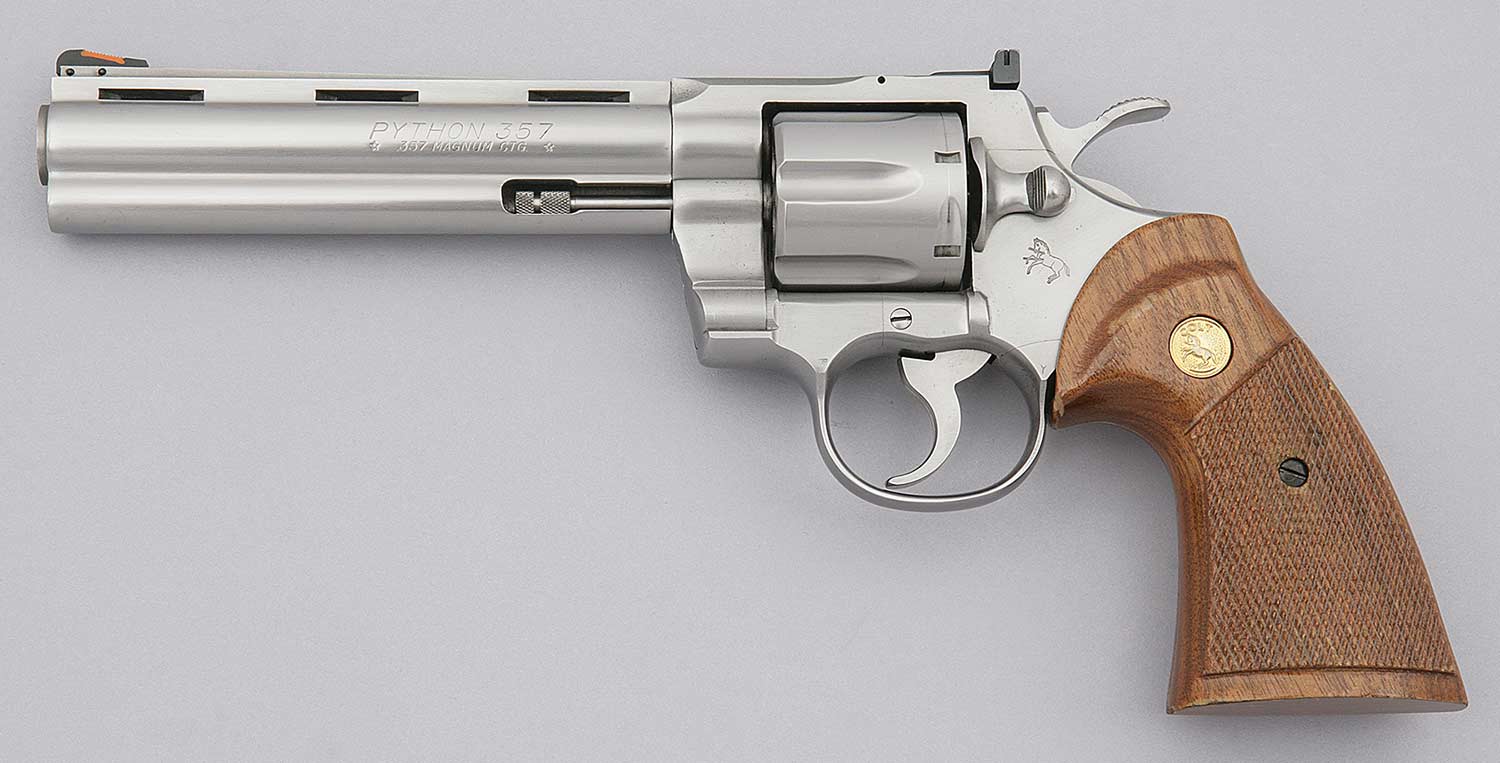
The Colt Python has been variously described as the Rolls-Royce of revolvers, the Cadillac of revolvers, and simply “the best revolver ever made.” We won’t argue with any of those descriptions. From the time the gun was introduced in 1955, the Python proved to be superbly accurate. Although it was reportedly originally intended to be a target gun chambered in .38 Special, it was introduced in the then-new .357 Mag. chambering, and found ready acceptance with police officers and competitive shooters. It would become a legend among American firearms and command high prices from collectors.
Visually, the Python was a stunner, with features that set it apart from the crowd. The oversized frame had clean lines and beveled edges. The underlug was full-length and paired with a full-length vent rib atop the barrel, adorned with adjustable sights, giving the barrel contour a very different look than most guns of the time. Finishes included royal blue, bright nickel, satin stainless, and polished stainless.
Apart from its looks, what truly set the gun apart was the skilled craftsmanship applied to its construction. Built on the Colt I-frame, the guns were built with very tight tolerances—with a lot of hand-fitting and hand-polishing—and had a rock-solid lockup. The trigger was, in a word, smooth.
The gun was heavy by today’s standards, but that helped to tame recoil. You could buy the gun with 2.5-inch, 3-inch, 4-inch, and 6-inch barrels, and there was a hunter model sold with an 8-inch barrel and a 2X Leupold scope installed by the factory. Colt made the Python until the late 1990s, and the gun thereafter was available only from the Colt custom shop until 2005, when it was discontinued entirely.
3. Remington 600

The Remington 600 rifle is one of three Remington guns on our list, and that should be no surprise considering the sheer number of models Big Green has produced since 1816. The short-lived Model 600 was a push-feed, bolt-action rifle, produced from 1964 to 1968. It was conceived as a woods rifle for hunters. Some called it a guide gun. Some simply called it ugly. But beauty is in the eye of the beholder, and those who bought the rifles were generally quite fond of them.
Remington promoted the 600 by saying it carried like a carbine but shot like a rifle. The gun was never a best-seller, and that may have had a lot to do with the fact that it looked, well, different. The gun had an 18.5-inch barrel with a vent rib that was made, unfathomably, of nylon. Also prominently on display was a “shark fin” front sight, and a bolt with a pronounced—and quite non-traditional—dogleg handle. What puts this unique gun on our list is the fact that it came very close to matching the specs for Colonel Jeff Cooper’s ideal scout gun—and, indeed, the rifle was set up for mounting extended-eye-relief scopes forward of the ejection port.
Weighing just 5.5 pounds, the 600 was fast-handling and a delight to carry. In its original incarnation, it was chambered for eight cartridges ranging from .222 Rem. to .350 Rem. Mag. I’ve never shot one of these light guns in .350 Rem. Mag., and I’m fairly certain I wouldn’t want to for very long, but versions chambered in milder cartridges proved to be very handy, versatile guns.
Variations of the rifle included the Model 660, which dumped the nylon vent rib, and the 600 Mohawk, which was a less-expensive version of the 600 using a stock made of Beech rather than Walnut. Both had relatively short runs as the scout-rifle concept was not yet fully in fashion.
4. L.C. Smith
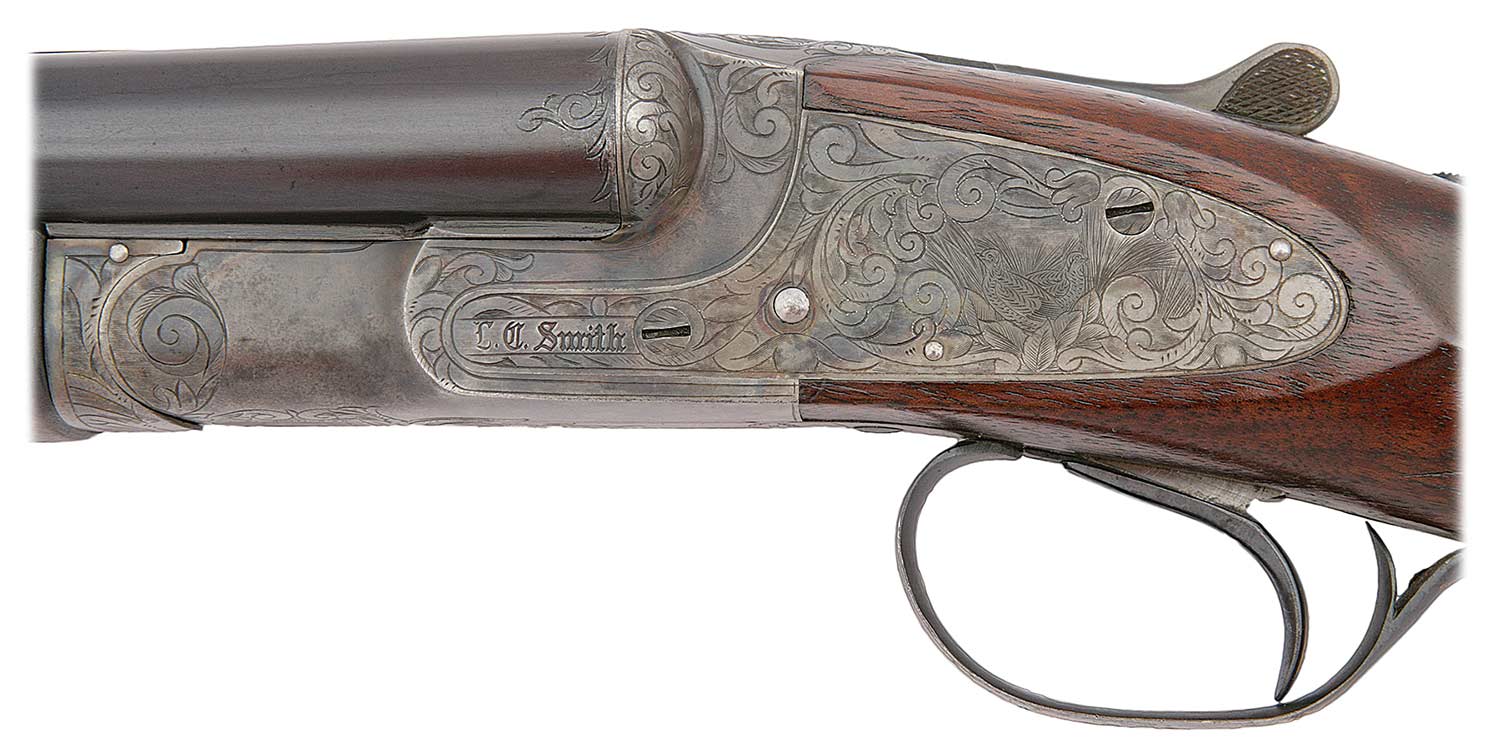
There was a time, lasting roughly from the end of the Civil War until the end of World War II, when double-barreled, side-by-side shotguns ruled the day with American shotgunners. That supremacy slowly eroded with the arrival of pump and semiauto shotguns along with the invasion of over-and-under guns from foreign shores.
Dominant double guns of the day included models from the likes of Winchester, Fox, Ithaca, and Lefever. While these were all box-lock designs, one shotgun stood apart from the rest because it was a sidelock design in the tradition of the finest English “best” guns. The L.C. Smith side by side, known affectionately by its fans as “Elsie,” captured the hearts and minds of American gunners who could afford them, but the brand had a troubled history.
The gun’s originator, Lyman Cornelius Smith, originally marketed the gun with exposed hammers in 10 and 12 gauge, and gradually expanded the line, but he sold the business to concentrate on developing what would become the Smith-Corona typewriter. The new owner, Hunter Arms Co., eventually declared bankruptcy and was sold. Production continued under the Hunter Arms name until 1945, when the company was again in trouble. Marlin Firearms stepped in and produced the guns until the old factory floor collapsed. That was effectively the end of the Elsie, although Marlin made a limited production run from another factory in 1967. The Italian firm of Fausti produced some L.C. Smith guns for a few years beginning in 2005, but these were box-lock guns with false side plates.
Over its long run, the L.C. Smith was produced in variations and grades too numerous to recount here and was offered in 8, 12, 16, 20, and 410 bores (Marlin reportedly made some in 28 gauge). One of my oldest bird-hunting pals spent much of his life hunting with a 16-gauge L.C. Smith, and game birds were as good as bagged when that shotgun spoke. If the L.C. Smith were offered today in 16 gauge or 28 gauge at a reasonable price, I’d be in line to buy both.
5. Ruger Model 44 Carbine
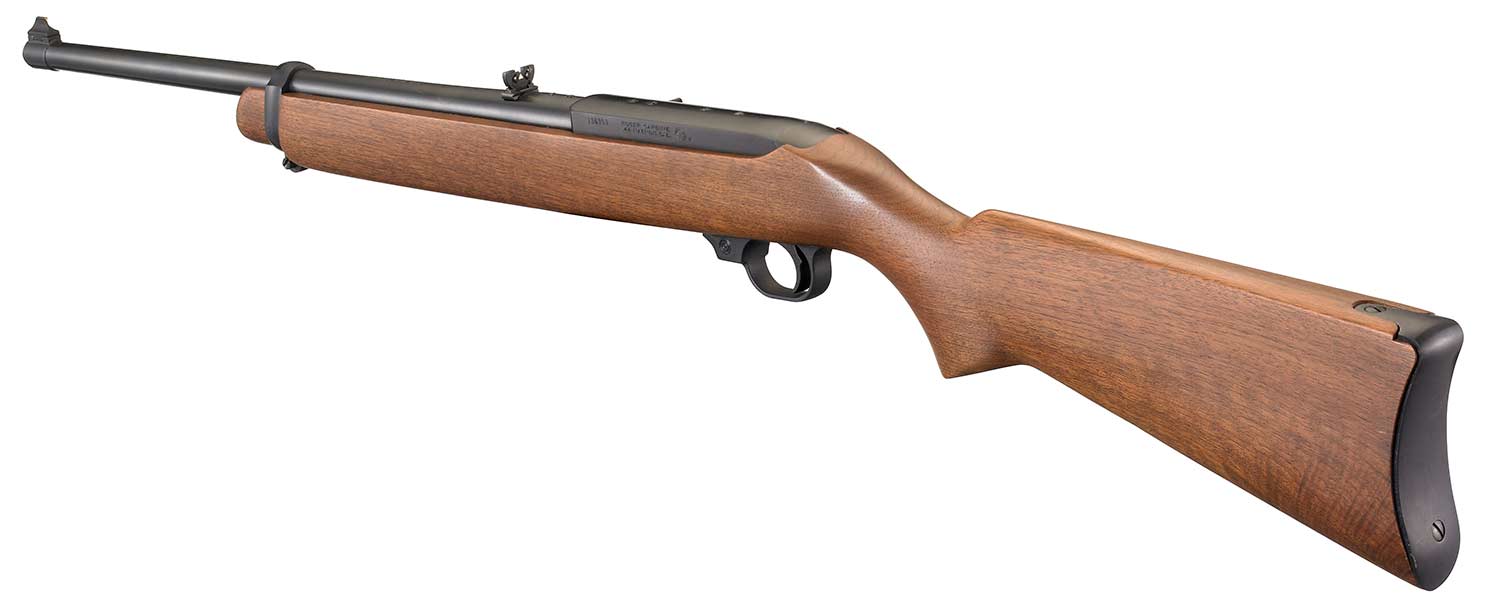
What would you call a rifle that resembles an M1 carbine but is chambered for the potent .44 Mag? Pretty handy, right? Bill Ruger initially introduced the Model 44 in 1961 as the “Deerstalker” because he envisioned the gun as a great option for hunting deer at close range in the woods. A problem soon arose, however, as Ithaca already had a gun with a similar moniker, and the gun was renamed the Model 44. The timing couldn’t have been more perfect, as the .44 Mag. cartridge was relatively new and poised to take the shooting world by storm.
A lot of shooters today have never heard of the gun, but it deserves more than a little respect. It wasn’t just the first commercially successful .44 Mag carbine. It was the rifle that launched the entire series of great Ruger rifles to follow. Just three years after the Model 44’s introduction, for example, Ruger unveiled a .22 rimfire version called the 10/22, which went on to become one of the most popular semi-auto rimfire rifles of all time.
In operation, the Model 44 was a gas-piston, short-stroke, semiautomatic design that used a four-round tubular magazine. The primary knock on the gun was that all-lead bullets could foul the gas port, but that was simply addressed by using jacketed hollow point ammunition. The basic model weighed only around six pounds and had an 18.5-inch barrel, along with a folding rear and gold bead front sight. But Ruger also offered variations with Monte Carlo and Mannlicher-type stocks and rear peep sites.
The gun was expensive to produce, particularly since its receiver was machined from a block of ordnance-grade steel, and the gun was dropped from the lineup in 1985. Customers have clamored for its return ever since, and there has reportedly been a fair amount of discussion within Ruger over the years about bringing the gun back. We’ll add our vote to the “yes” column.
6. Remington 700 Titanium Lightweight

Back at the turn of the Millennium, truly lightweight hunting rifles made with titanium actions were found exclusively within the domain of custom or semi-custom gun makers. That changed dramatically in 2001 when Remington introduced the Model 700 Titanium Lightweight rifle, thus becoming the first major manufacturer of production rifles to trot out a titanium-action hunting rifle. The gun weighed a mere 5 ¼ pounds with a short action and 5 ½ pounds in the long-action version.
That was a revolutionary achievement for factory rifles, but the titanium action wasn’t the only innovative aspect of the gun. It incorporated a number of other weight-saving design elements that are commonly found on lightweight guns today, such as a spiral-fluted bolt and a skeletonized bolt handle. The bolt knob was hollowed out, and the rifle had a composite stock from Bell & Carlson made of carbon fiber and Kevlar.
The gun had a blind internal box magazine with a three-round capacity, and was initially offered in .260 Rem., .270 Win., .7mm-08 Rem., and .30-06 Springfield. In 2007, Remington unveiled a modified version called the 700 Alaskan Ti. This gun had what Remington called a “magnum contour” fluted, 24-inch stainless barrel, yet weighed only 6 ¼ pounds. Chambered for nine cartridges ranging from .7mm-08 Rem. to .300 Win. Mag., it had a hinged-floorplate magazine with a four-round capacity in standard calibers and three rounds in magnum chamberings. The gun also had an MSRP that was nearly double the $1,199 price of the original. That was a pretty steep price for a factory rifle at the time, and possibly contributed to the gun’s eventual demise.
That doesn’t mean it was a bad idea. Today, some 18 years after the first Remington titanium-action gun hit the market, Weatherby has just announced the new Mark V Backcountry Ti rifle, which has a titanium action and weighs just 4.9 to 5.9 pounds depending on the chambering. We can’t help wondering if Big Green might one day revisit the concept of titanium actions and rifles weighing less than six pounds.
7. Sako Finnwolf

The Finnish firm of Sako is today primarily known as a maker of fine bolt-action rifles, but there was a time when the company made one of the best modern-style, lever-action guns on the planet. The Sako Finnwolf is often compared to the Winchester 88, which it somewhat resembled, but the Finnwolf was in many respects a better rifle. The action was exceptionally smooth. Fit and finish were excellent, and the Finnwolf had a much better trigger. People who have owned both tend to give the Finnwolf higher marks for accuracy, quality of construction, and handling qualities.
The rifle was chambered for .243 Win. and .308 Win. when it was introduced in 1968 with an eye toward the North American market. Like the Savage 99, the Finnwolf was an internal-hammer design, but it used detachable four-round magazines. Despite having an all-steel receiver with a left/right rack-and-pinion gear system, the standard model weighed just 6.75 pounds and had 23-inch barrels.
One of the most striking features of the gun was its one-piece stock. If you didn’t spot the lever beneath the action, you might at a glance mistake it for a bolt-action rifle. The forearm was squared, with flat sides, and even the pistol grip resembled those found on bolt guns. Stocks were initially made in the Monte Carlo style, but at least some were subsequently changed and made ambidextrous.
Production is said to have ceased in 1974, but Sako reportedly responded to public demand with a small production run in 1982.
8. Colt Woodsman
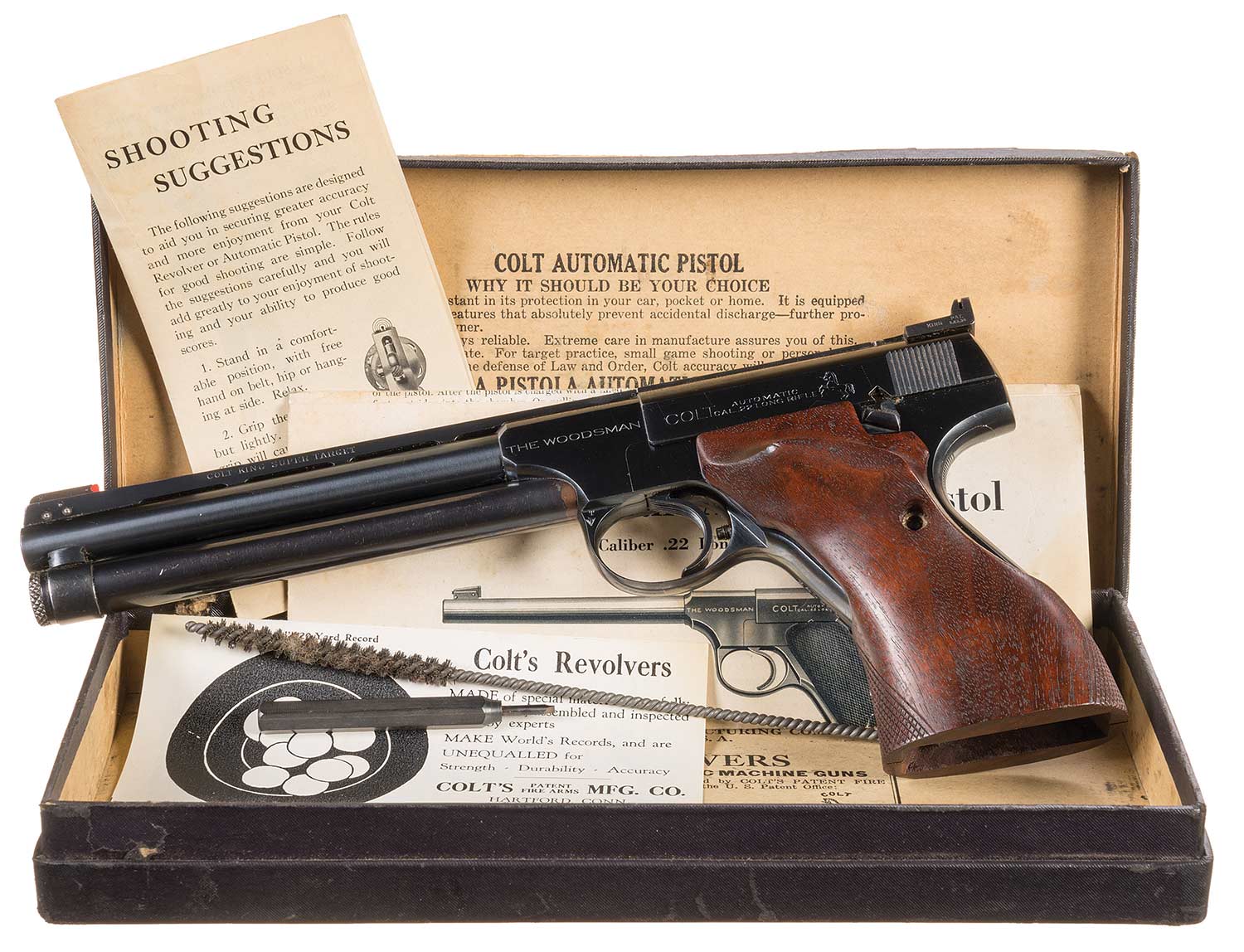
If you were a youngster growing up any time between 1915 and 1977, with aspirations of owning your very own firearm, there were a couple of guns that likely fueled your dreams. One was a .22 rimfire rifle, and the other was likely a Colt Woodsman .22 Long Rifle pistol. Favored by such ne’er-do-wells as Ernest Hemingway, the Woodsman was the .22 pistol that defined .22 pistols for more than half a century. It was much admired and much imitated.
The pistol’s success was due partly to its unique appearance and partly to the simplicity of its design. Based on a John Browning design that was modified prior to the pistol’s introduction in 1915, the pistol had a fixed barrel, a simple blow-back action, a hidden hammer, and an innovative (for the time) magazine that positioned rounds at an angle so the rims would not catch on each other and hinder reliable feeding.
Over the years, Colt produced numerous variations and models, but the guns were essentially made in three series. The earliest series included target, sport, and match target models, while second series guns, made after World War II, were built on heavier frames and incorporated an automatic slide stop, magazine safety, and other changes. The gun underwent additional changes in 1955.
Unfortunately, the pistols were expensive to produce, requiring a lot of hand-fitting, and they were dropped from the Colt lineup in 1977.
9. Browning Superposed
Ask knowledgeable scattergun fans to name the most influential over/under shotgun wearing an American brand during the past century, and many will instantly identify the classy, elegant Browning Superposed shotgun. The gun was John Browning’s last long-gun design, and it fulfilled his goal of bringing an affordable, dependable stackgun to Americans who could not afford the expensive European over/under guns of the time.
Introduced in 1931, five years after Browning’s death, the Superposed was still more expensive than side-by-side shotguns of the time, but it was at least within reach for those who could save the money to buy one. It remained so until prices started creeping up in the 1960s, due mostly to rising labor costs in Belgium, where the gun was made by FN.
The gun was initially equipped with double triggers, but Browning’s son kept working on the trigger design until it was perfected, and in 1939 the gun was offered with a single selective trigger. It has been made in numerous grades, models, and gauges over the years. With the exception of a couple of models designed to be lighter, such as the Superposed Lightning, the guns were somewhat heavy, but they swung smoothly and were easy on the shoulder. They were also built like tanks, were superbly reliable, and durable enough for multiple generations within a family to keep on shooting them.
Browning introduced the lower-priced, Japanese-made Citori line in the 1970s, and the days of the Superposed were numbered—sort of. Although it was dropped from production as a standard factory offering, you can still get one made mostly to your specifications from Browning International’s Custom Shop if you can afford it and possibly wait a couple of years for delivery. The gun makes our list by virtue of the fact that it is no longer a production gun—and it was simply too good and too influential to ignore.
10. Remington 7400

With a few notable exceptions, semi-automatic rifles executed in a traditional sporting style are not much in vogue these days, having been largely supplanted by AR-platform rifles. One that we wish was still around is the Remington 7400.
Remington traces its history in developing auto-loading rifles back to the Model 8, which was famously used to end the criminal careers of Bonnie and Clyde. That was followed by the Model 81, which was followed by the Model 740 in 1955, and the 742 in 1960. The Model 7400 (and the virtually identical but higher-grade Model Four) were unveiled in 1981 with some significant mechanical improvements that boosted the gun’s reliability.
The gun wasn’t noted for possessing a particularly great trigger, but it was well-balanced, with a weight of about 7.5 pounds. It handled and pointed much like a shotgun, and a lot of still hunters loved it for that reason. The controls would not be unfamiliar to fans of semiauto shotguns, as the safety was located at the rear of the trigger guard and the operating handle was in the customary location on the upper right side of the receiver. The detachable magazine held four cartridges.
Variations included special purpose, synthetic and carbine models. Standard models had 22-inch barrels, while the carbines had 18-inch barrels. The gun was chambered for cartridges ranging from 6mm Rem. to .35 Whelen, with some interesting stops in between, such as the 7mm Rem. Express or 280 Rem. It was available with either a standard-grade or high-gloss stock.
Production ended around 2004, and in 2006 the 7400 was replaced by the Model 750, which was discontinued in 2015.
So, that’s our list. Have any additions? We’d love to know.
